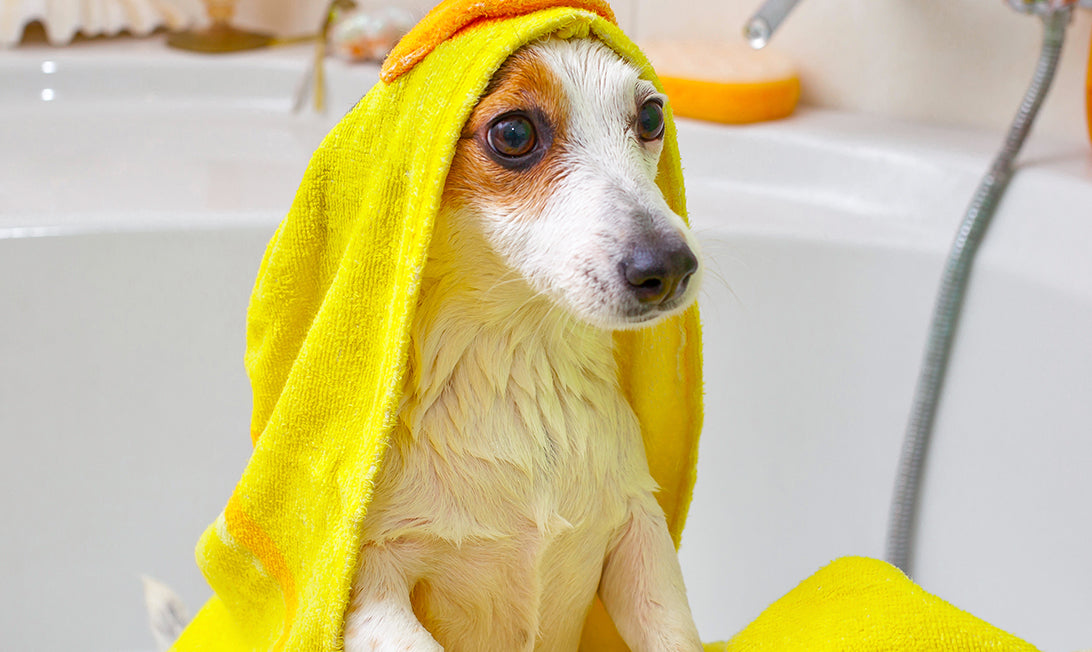
It’s normal for your dog to scratch now and then, but if your dog is excessively itching, it could be a sign of fleas or allergies.
By knowing what to look for and having a few simple remedies, you should be able to keep your dog’s itching to a minimum.
Why Is My Dog So Itchy?
As the weather starts to change, you may notice an increase in their itching.
It’s hard to see your dog itching and feeling uncomfortable, but there are a few itchy conditions that you can treat at home.
1. Parasitic InsectsOne of the most common reasons your dog might be itching is fleas, ticks, or other parasitic insects. These small creatures feed off your dog’s blood and leave your dog with extremely itchy skin.
Fleas, ticks, and other insects make their way onto your dog through transfer. Ticks are often picked up by dogs when they move through long grass or outdoor areas, and fleas are commonly transferred from animal to animal.
TicksTo keep on top of these itchy bugs, you should regularly check your dog’s coat and skin for signs of an infestation. You should be especially vigilant when checking for ticks as ticks can carry a range of serious diseases that could put your dog’s health at risk. To name a few, your dog could pick up Lyme disease, Rocky Mountain Spotted Fever, and Anaplasmosis (1). These diseases can seriously impact your dog’s health and even you and your family, so it’s essential to be careful during tick season.
FleasFleas pose a lower health risk to your dog but can still be irritating and painful. Some dogs can even have an allergic response to flea bites, resulting in painful marks that can come with hair loss, inflammation, and infections requiring veterinary care (2). The good news is that fleas tend to be easier to find in your dog’s coat, primarily because of their active movement.
Flea dirt is also another way to determine if your dog has fleas or not. Flea dirt is flea feces, and these small black dots can often be found in areas of high flea traffic. We recommended checking your dog’s coat, bed, and favorite resting places to see if you can find signs of fleas.
2. AllergiesNot all itchiness has to do with insects.
Environmental allergies can also lead to itchiness in dogs, and it’s essential to figure out what your dog is reacting to so you can remove the allergen. Allergens can come in a variety of forms, whether they are pollen, mold, or food.
Dogs can also develop dry, itchy skin conditions like dermatitis when they come in contact with soaps (3). Because of this, it’s important to wash your dog with a pet-friendly shampoo.
We recommend our CannaLove™ Allergy & Itch Relief Shampoo, which is specifically developed for sensitive skin and helps prevent skin damage from allergen exposure.

Another reason why your dog might be itching so much could be because of dry skin.
When dogs have a build-up of dry skin, it can lead to uncomfortable itchiness, dandruff, and cracked or tough skin.
Many factors can lead to your dog developing dry, itchy skin. Low humidity is one factor. If you live in a particularly dry climate, your dog may have a higher chance of developing dry, itchy skin (4). To help your dog, pay particular attention to your dog’s skin to ensure it stays moisturized
Our advanced CannaLove™ Advanced Moisturizing Shampoo can help keep itchy dry skin at bay. It contains a fatty acid complex that helps reduce dehydration in the fur and skin of your dog.

Simple Remedies to Reduce Itchiness in Your Dog
Here are some simple anti-itch remedies that can help ease your dog’s discomfort.
1. Colloidal OatmealColloidal oatmeal can be purchased and added to your dog’s next bath. Research shows that colloidal oatmeal is effective at reducing the inflammation that can lead to itchy skin. It also can provide your dog’s skin with skin protection (5).
2. Flea and Tick TreatmentsFleas and ticks are often the answer to your dog’s itchy problems, but you can get rid of fleas and ticks with proven prevention treatments. There are many flea and tick treatments on the market, from chewable tablets to topical applications (6).
With some easy preventative measures, you can help to reduce your dog’s flea and tick problem and keep your pet itch-free for longer.
3. Coconut OilCoconut oil is not just delicious, but it can also be an excellent way to help reduce dry, dehydrated skin on your dog.
Coconut oil has been found in studies to be an effective topical moisturizer that can reduce the presence of scaly, itchy skin (7).
If you want to try coconut oil for your dog’s itchy skin, simply massage it into their skin after their bath. You can also feel secure using coconut oil on your dog, knowing that it is safe for use on dogs, even if they lick some of it off.
The Bottom Line
There are many reasons why your dog might have itchy skin. Fleas, ticks, allergies, and dry skin can leave your dog uncomfortable and scratching.
Using our range of remedies, you can help reduce your dog’s itchiness or stop it from occurring in the first place.



